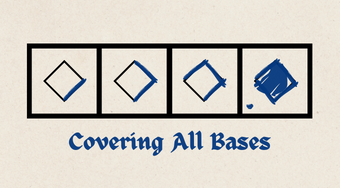Did Grimace Save the 2024 Mets? How About Candelita or Jorge or Glizzy Iggy or…
As many have already pointed out, the first-half 2024 Mets had enough storylines to make your head spin. While superstitions and “saved seasons” are hardly a novelty in baseball, the sheer number of cartoonish saviors have made these past few months feel like a whirlwind.
Rising from 11 games below .500 to a 3rd wild card spot certainly involved playing better over the past month and a half, but can we point to one of these events as the turning point? What better way to look into this than with a deep dive using shoddy statistics:
Defining the Problem
We can model a baseball season as a series of Bernouli trials: events that result in a success (win) or failure (loss). We can then use Fisher’s exact test to determine if two sets of Bernoulli samples before and after a change point come from different populations. In other words, whether the Mets prior to a certain date are playing significantly differently than after that date. I say that we can and not should because this setup involves some assumptions:
Each trial has the same expected probability: is a game against a last place team as difficult as one against the league best?
Each trial is independent from all others: so many factors (bullpen depth, team momentum, and so on)
Despite these, let’s roll with this train of thought:
Which Change Point?
What event can we choose as when the season was saved? Four come to mind: Jorge Lopez (“the worst f**king teammate in MLB”)’s glove-throwing incident and following team meeting (5/29), Candelita/José Iglesias’ song OMG being used as the Mets’ home run song (6/1), Francisco Álvarez’ return from the IL (6/11), and of course, Grimace’s now famous first pitch (6/12). Using these as candidate “season savers” gives the following results (lower p-values mean the Mets played significantly differently before and after that event):
| Change Date | Record Before | Record After | Fisher p-value |
|---|---|---|---|
| 5/29-30 (Team meeting) | 22-33 | 27-13 | 0.0123 |
| 5/31-6/1 (OMG) | 24-33 | 25-13 | 0.0357 |
| 6/10-11 (Alvarez) | 28-36 | 21-10 | 0.0314 |
| 6//11-12 (Grimace) | 28-37 | 21-9 | 0.0166 |
With an α (significance level) of 0.05, all of these events are viewed as “statistically significant”. The Mets’ play following the team meeting was the least likely to occur given their preceding play with Grimace’s first pitch as a close second. So that answers it: the team meeting and Grimace saved the season!
Not so fast.
Even ignoring the assumptions we looked at before, correlation and causation are still distinct. But more importantly, what about all the other wacky incidents that have occurred throughout this rollercoaster of a first half? The Rally Pimp, $1 hot dog night, and Glizzy Iggy among others are all memorable. Let’s take a look at the Fisher p-values after each game so far this season:
Unsurprisingly, almost all of the lowest p-values come during the stretch from 5/25 to 6/13 except for 4/4, right after their 0-5 start to the season. Sure enough, the highly discussed team meeting has the second lowest p.
One More Angle
Baseball games are Bernoulli trials, but so are plate appearances. Every time a player comes to bat results in getting on base or not. The assumptions we looked at before are even more tenuous for plate appearances. Regardless, looking at the same turning points, we get:
| Change Date | OBP Before | OBP After | Fisher p-value |
|---|---|---|---|
| 5/29-30 (Team meeting) | 640/2102 (.304) | 534/1545 (.346) | 0.00885 |
| 5/31-6/1 (OMG) | 671/2178 (.308) | 503/1469 (.341) | 0.0302 |
| 6/10-11 (Alvarez) | 767/2454 (.313) | 407/1193 (.341) | 0.0891 |
| 6//11-12 (Grimace) | 775/2488 (.311) | 399/1159 (.344) | 0.0522 |
Unlike with win-loss record, only the earlier team meeting and OMG turning points are significant. This makes sense as offensive production increased in early June before the later events, while Grimace’s first pitch was followed by a seven-game win-streak that made our win-based analysis more significant.
While the p-values for all games are more erratic for OBP than for win-loss record (as would be expected as win-loss only adds one sample each day), the general pattern remains the same. In fact, the team meeting has the lowest maximum, suggesting a massive offensive turnaround in the month and a half following that game.
What Does This Prove?
The Mets are playing noticeably better over the past 40 games than they did in their first 55. Can we statistically prove which event led to their turnaround? Of course not. In reality, all of these events combined to create a team that is playing more comfortably and cohesively than they did through the end of May.
The team meeting was “productive” by all accounts, as evidenced by the team taking early drills the next afternoon. Iglesias’ call up and following music sensation certainly brought a tense clubhouse closer together. Álvarez’ impact on the pitching staff (not to mention his production in the lineup) is well documented. And of course Grimace gave the team and the fans something to believe in when the standings provided cold comfort.
Behind the unimpressive 49-46 All-Star break record was a first half with characters and storylines that no statistics could describe. Whatever (and whoever) we’ll see in the second half for these Mets, it will surely be an experience.



